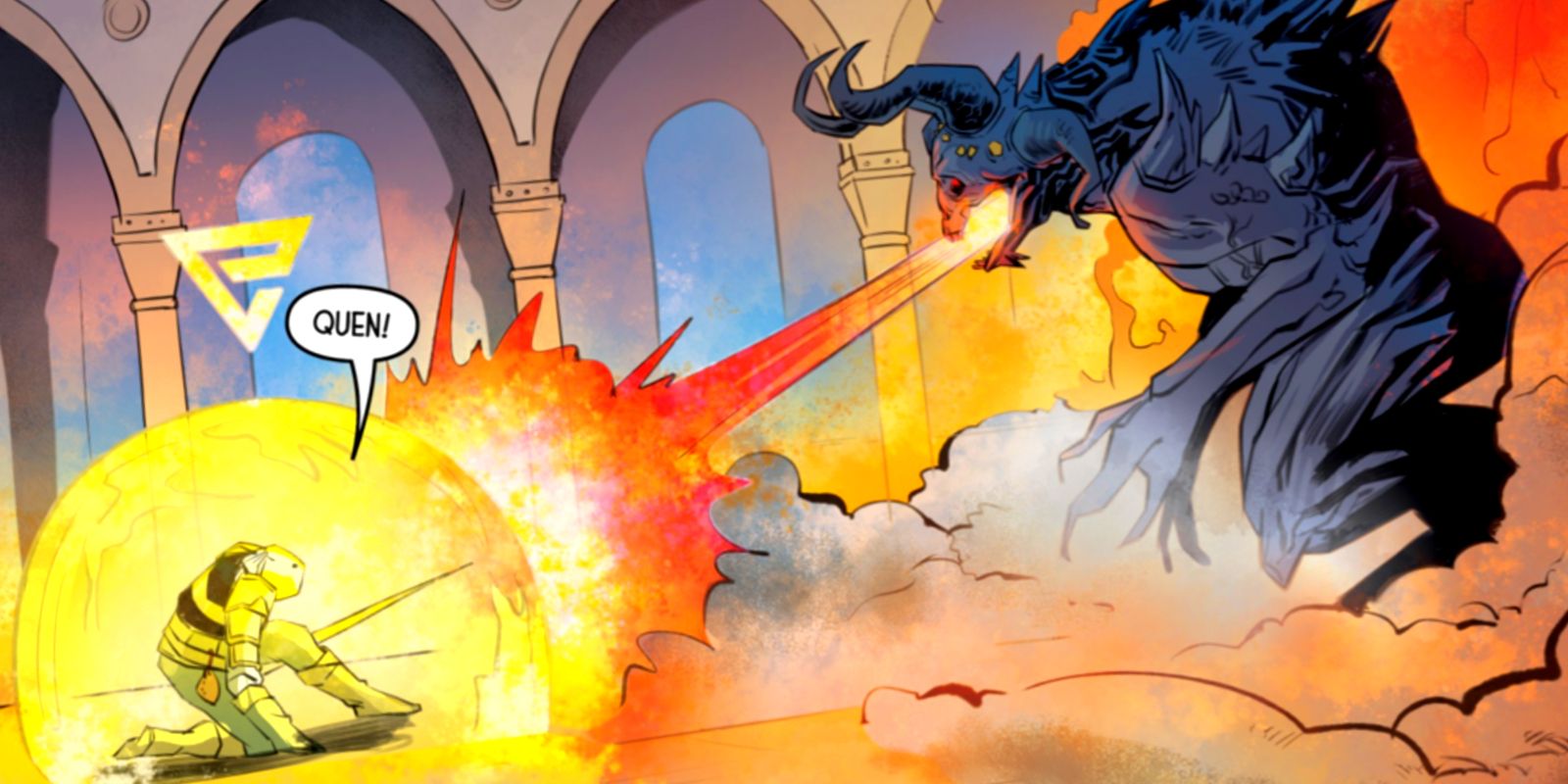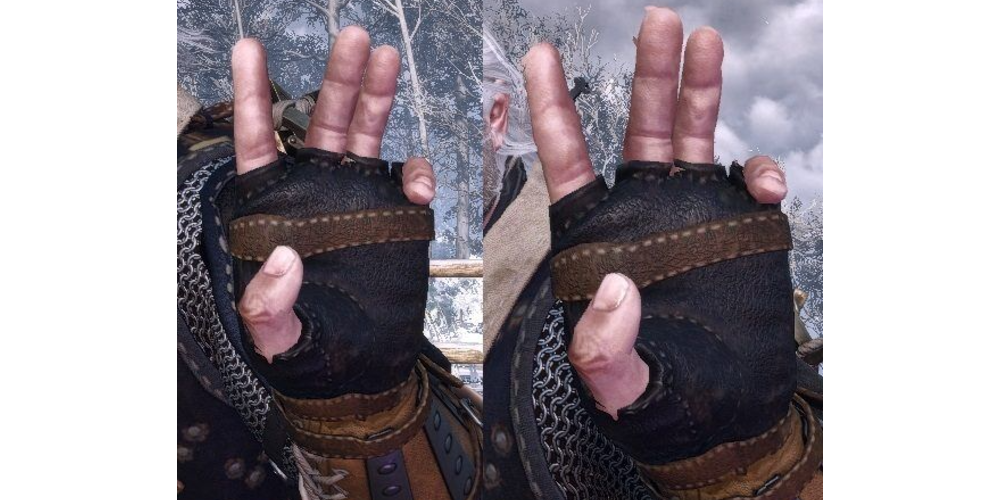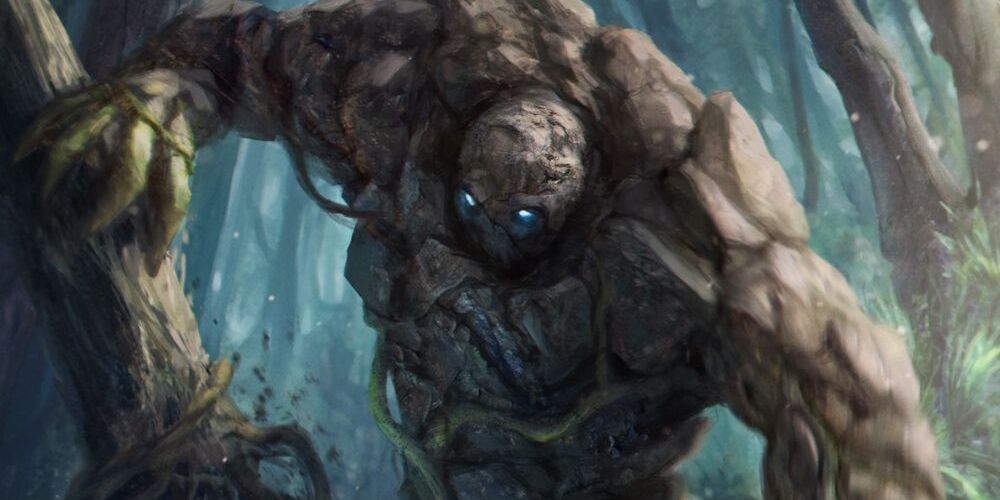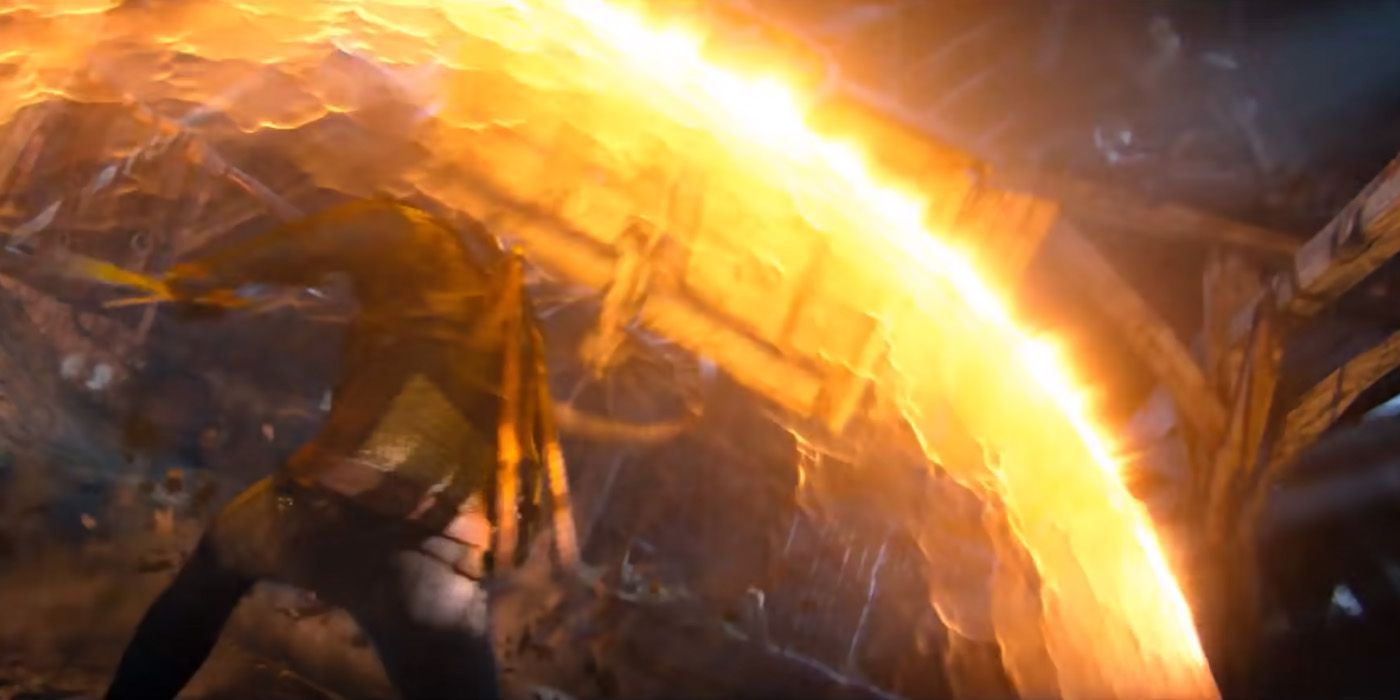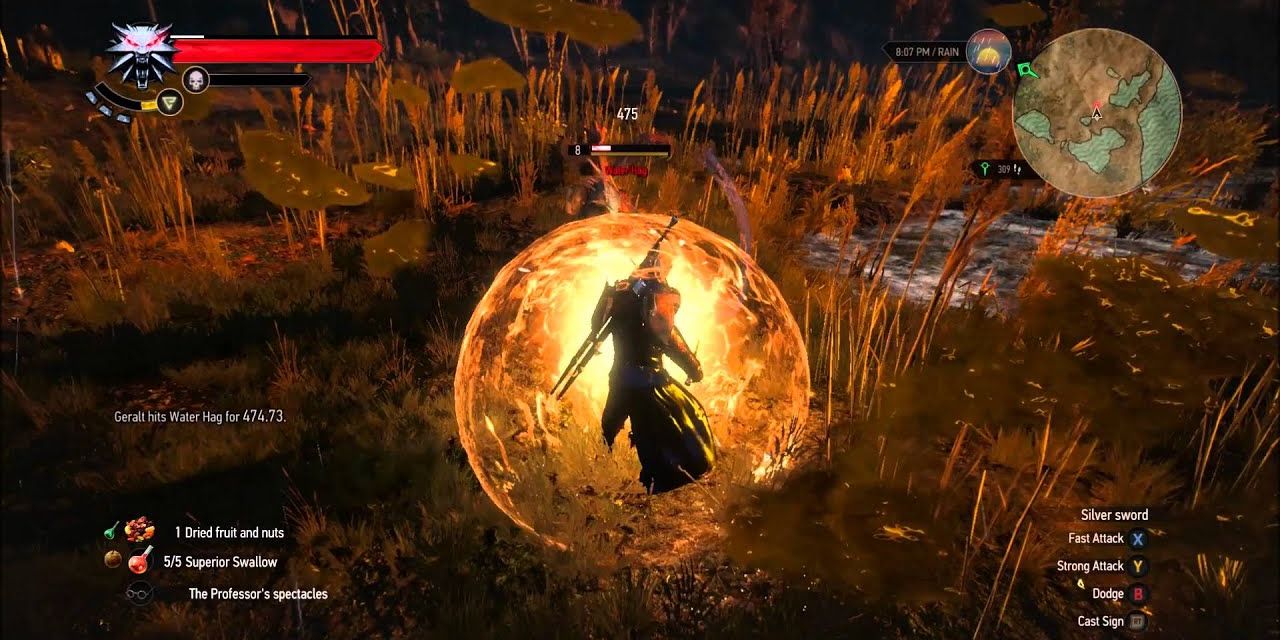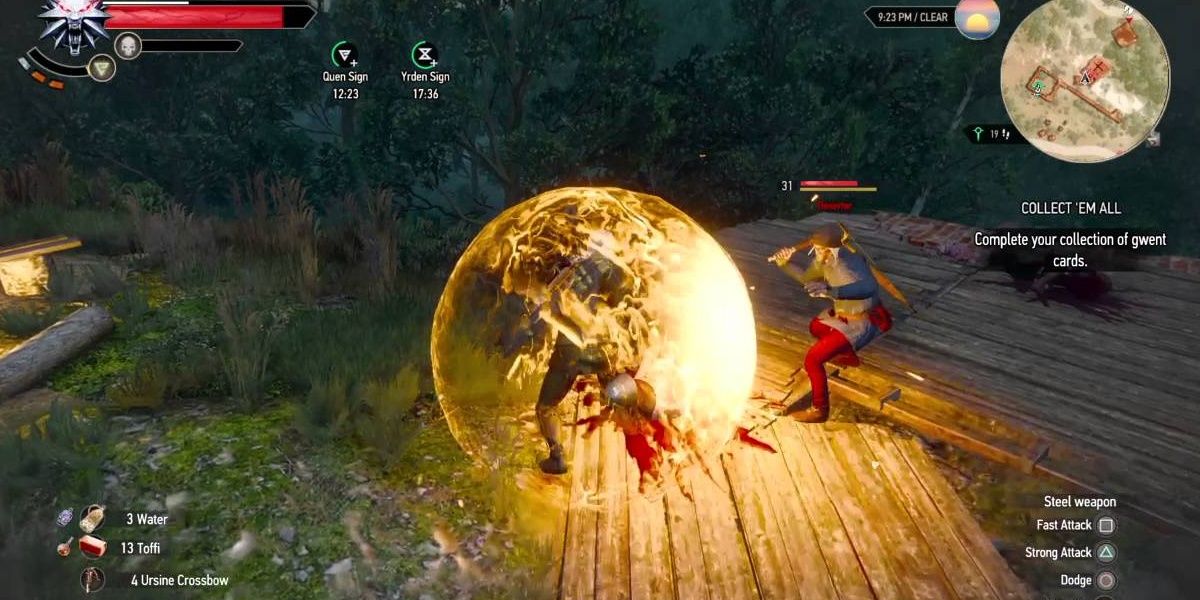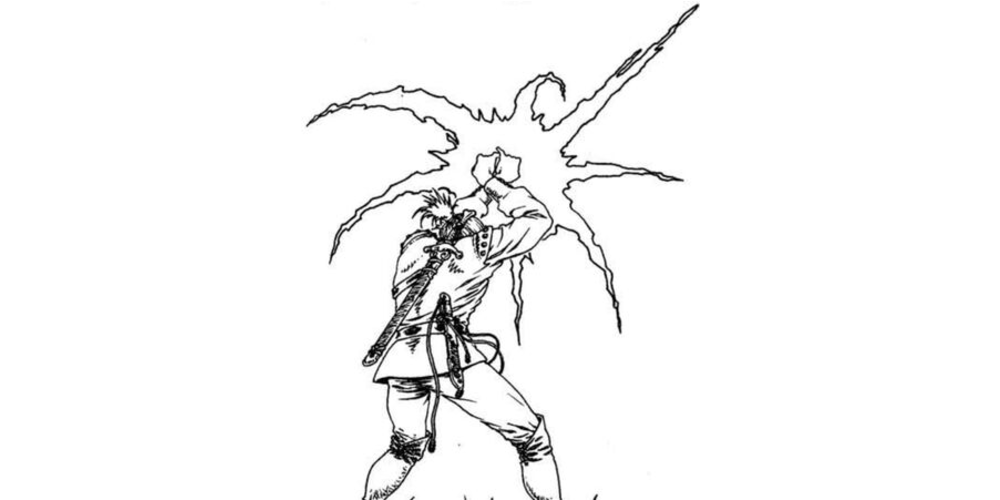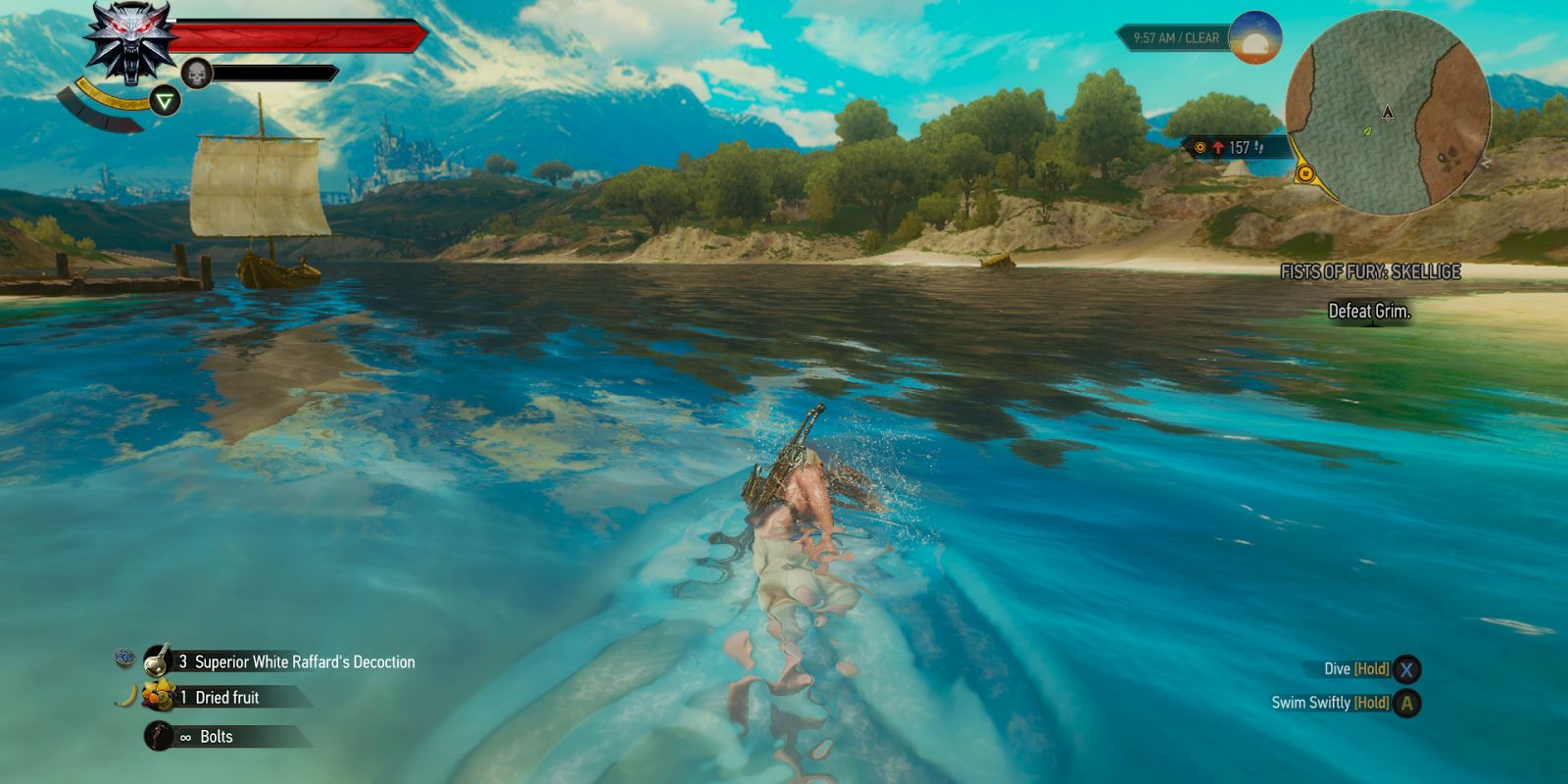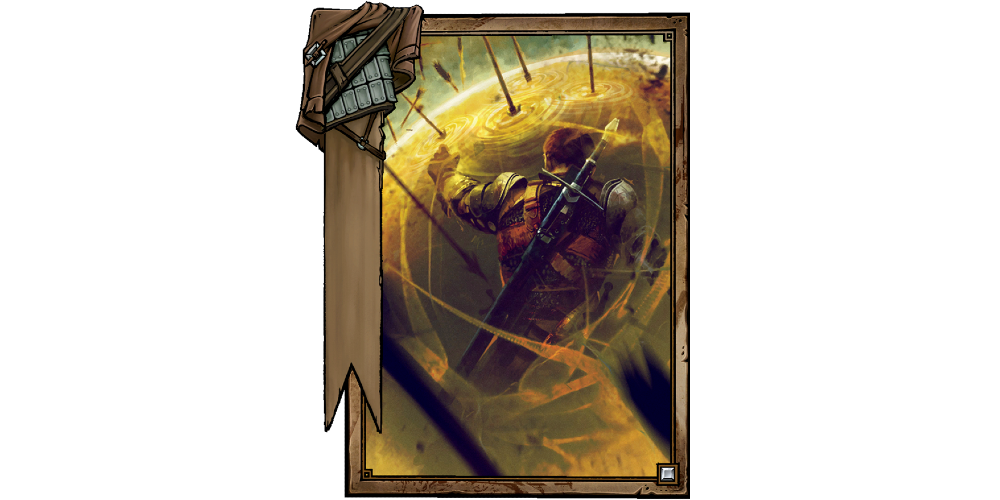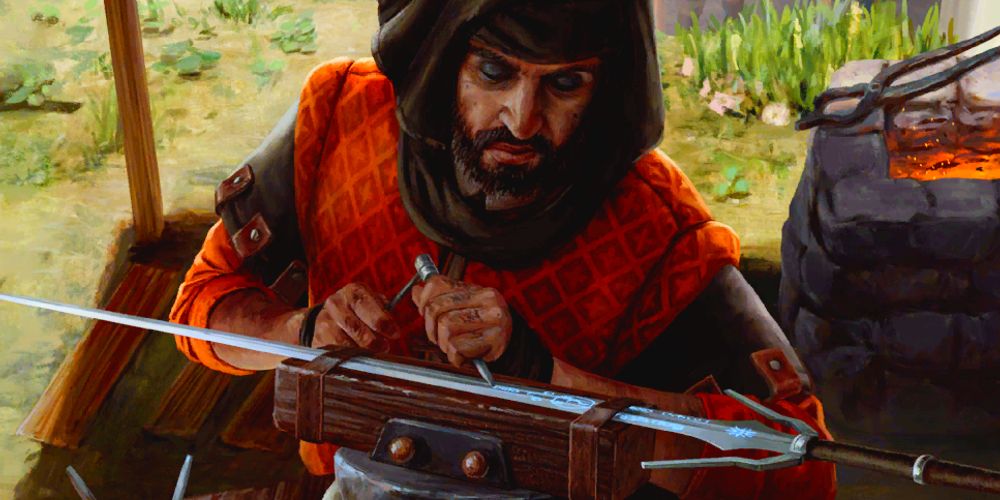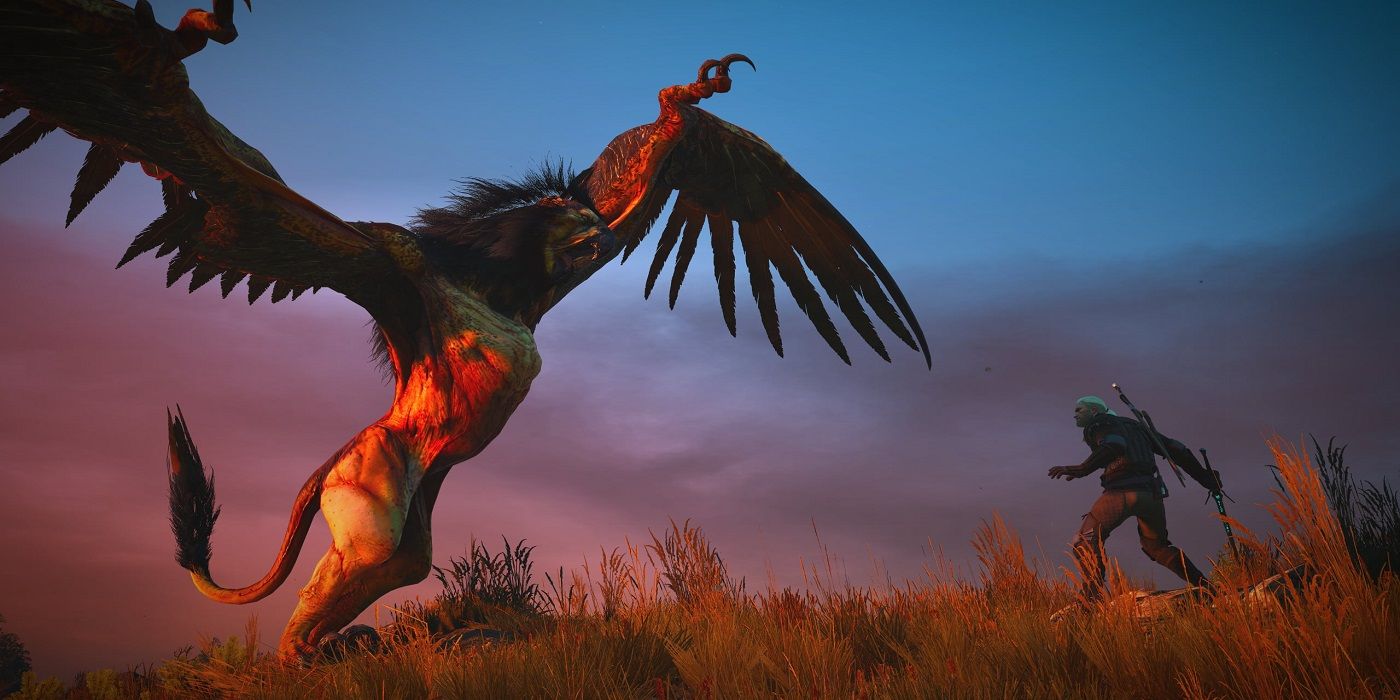The five magical signs that players can take advantage of in The Witcher 3: Wild Hunt each act as a tool for specified jobs. There is no single best sign, as each has its positive and negative aspects. Some are better for offense, like fierce Igni and unrelentingly forceful Aard, yet there are times when a strong defense is the best offense.
For such situations, Quen is the sign that witchers should use. This simple spell has changed a bit over the course of the three games in The Witcher series, though in the final one it acts as a bubble-shaped shield that lasts until it takes enough damage to dissipate or if the user dispels it. This is an indispensable tool for all witchers, therefore it is crucial to learn as much about this sign as possible so that one can make the best use of it, regardless of circumstance.
10 Casting Quen
Practicing hand signs is an important part of witcher training. Better control over one's digits will allow for the easier formation of hand signs, particularly the more dexterity-required ones. Once one has this aspect under control, they can move on to the next casting step.
Drawing the sigil, roughly an upsidedown triangle, for Quen in the air will send the goldenly glowing orb about one's person for a potentially life-saving shield.
9 Formed From Earth Magic
All of the signs are technically very simple spells that don't require a deep understanding of the elements to utilize like other, more complex forms of sorcery. This limits their usage, though grants access to straightforward, and powerful, benefits regarding the manipulation of these elements.
Quen calls upon Earth magic to form a fortified defense. This element is notoriously difficult to manipulate, even for skill magic users. The natural stoic nature and resilience of earth make twisting it to one's desires a significant challenge, however, the simple nature of Quen works to counteract this. There are schools of magic referenced in The Witcher 3 that deal with this element like Geokinesis and Geomancy, although they have not been seen or written about nearly as much as other types and details about them are virtually nonexistent.
8 Stamina Fuels The Shield
As many witchers likely know, how often one can cast a sign depends on their stamina. Faster stamina regeneration results in more signs that can be cast. This is the most important for combat-heavy signs, especially in situations where Geralt finds himself up against tougher foes.
The type of armor one is using can greatly impact this notion. Lighter armor usually grants better stamina recovery than medium and heavy armor, albeit with lower defensive stats. Though, with a Quen sign active, the defensive stats of one's armor don't matter so much. Having the stamina to repeatedly cast Quen can almost render the need for armor obsolete if combined with well-timed dodges.
7 Prolonging Shield Life
This spherical-shield that shines like the sun is usually good to take one or two hits from adversaries, though with the right perks and upgrades it can do more than that. Contrary to what most believe, the damage calculations for resistance take effect before an incoming attack makes contact with the Quen shield.
Increasing one's resistance to certain damage types will increase how many hits Quen can take before dissipating. The usefulness of this will vary depending on the threat at hand, though carrying a stronger shield at no extra cost is not an opportunity one should pass on.
6 Activate The Active Shield
Like the other signs, Quen has an alternate mode that can be acquired at Tier 2. In appearance, Active Shield Quen is very similar to the sign when cast regularly, and this is because it functions in the same manner. However, one needs to continuously hold down the casting button (or key) to hold up this shield.
This not only grants one the chance to more precisely time blocks but also bestows an incredibly useful effect. When enemies strike Active Shield Quen, Geralt will recover a sizable amount of health. For protracted battles, this is the ideal strategy.
5 Heliotrop
Originally, the Quen sign was not supposed to have all of the traits that it currently possesses in The Witcher video games. In the books by Andrzej Sapkowski, Quen can only reflect non-physical and non-melee attacks, such as the sonic screeches of a bruxa or other elemental damage.
However, constant misinterpretation and confusion with another sign, Heliotrop, has led to Quen being what gamers see today. Heliotrop, only ever seen outside of the books in The Witcher 2: Assassins of Kings, is meant to protect the caster from physical attacks, offensive magic, and even fall damage or collisions with walls. CD Projekt Red likely amalgamated traits of Heliotrop into Quen for the sake of simplicity in The Witcher 3.
4 Can Be Active Underwater
For the most part, the only real combat option a witcher has in the water is their crossbow. Thankfully, this ranged weapon can one-shot most aquatic adversaries, however, it cannot stop them from doing damage. If Geralt gets swarmed by waterborne foes, not even the fastest firing crossbow can save him from damage and possibly death.
If one is having trouble with such undersea assaults, they should try casting Quen on land before heading into the water. Unlike other signs, Quen stays active when treading water or even completely submerged, making it the ideal tool for dangerous sub-surface exploration.
3 Removed From Gwent
In order to balance certain aspects of the sub-games found in and alongside The Witcher 3, CD Projekt Red has had to make many changes to Gwent throughout the existence of this companion-game to The Witcher series. One of these changes was to completely remove the Quen Sign card.
This card's effect was to give a Bronze or Silver unit in one's hand, and all copies in the deck, a shield and boost them by 2. This would have allowed for some incredibly broken strategies that would enable cards that should be possible to take out relatively quickly becoming much more resilient and overpowered. Also, since many copies of Bronze cards could be in a player's deck, this could lead to a flood of abnormally high-powered lesser units. Thankfully, this card was removed in late 2017.
2 Protection Glyphword
Signs are handy on their own, although witchers with the correct crafting knowledge and money can imbue them with even greater traits outside of the regular upgrades, tiers, and perks. Geralt can find Runewords and Glyphwords all over the world, though some stand out as particularly useful. Especially when combined to create even more potent ones.
In the Hearts of Stone expansion, players can access and craft the Protection Glyphword, which when set into armor will grant a 100% chance to automatically cast Quen that won't use any stamina. This free shield is an excellent way to enter any battle. Players can make this great Glyphword by purchasing the services of the craftsman Runewright and providing him a Glyph of Quen, a Glyph of Yrden, and a Glyph of Warding.
1 Slaying That One Overpowered Griffin
By the time most players reach An Skellig they are both close to the end of the game's story and likely very high in level compared to most threats found in the world. Most witchers consider around level 35 to be the point where one is ready for end-game and DLC content.
However, there is one threat that surpasses all others in the form of a level 48 archgriffin located upon Skellige's northernmost island. Players can level grind for hours to get to an appropriate level to face this threat...or abuse the use of Quen. Archgriffins are a type of monster that attacks with infrequent, heavy strikes, making them the ideal foe for Quen to be useful against. Sure, a single swipe from its mighty claws can outright kill Geralt, but since those attacks come infrequently, players can time proper Quen usage to trivialize this supposedly tough fight.

